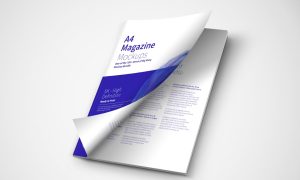ساخت آلیاژ Mg-Ca به روش متالورژی پودر برای کاربرد ایمپلنت زیست تخریب پذیر
ساخت آلیاژ Mg-Ca به روش متالورژی پودر برای کاربرد ایمپلنت زیست تخریب پذیر
Powder metallurgy preparation of Mg-Ca alloy for biodegradable implant application
چکیده
منیزیم و آلیاژهای آن یک گزینه محتمل و نوید دهنده برای کاربرد ایمپلنت بخصوص به علت خاصیت زیست تخریب پذیری آن است. در این تحقیق، ساخت آلیاژ Mg-Ca به روش متالورژی پودر (به درصد وزنی) از پودر منیزیم خالص و گرانول کلسیم تهیه شدند. فرایند آسیاب در آسیاب لرزشی با استفاده از گلوله های فولاد زنگ نزن به مدت زمانهای مختلف (3، 5 و 8 ساعت) انجام شد و سپس پودرها تحت عملیات فشرده سازی و زینتر قرار گرفتند. زینتر در دماهای مختلف (˚C 450 و ˚C 550) به منظور بررسی اثر دمای زینتر بر خواص مکانیکی و مقاومت خوردگی انجام گرفت.
ارزیابی ریزساختاری به روش های تفرق اشعه ایکس XRD، میکروسکوپ الکترونی روبشی SEM و طیف سنج تفکیک انرژی اشعه ایکس EDX انجام شد. خواص مکانیکی و رفتار خوردگی به روش سختی سنجی و تست الکتروشیمیایی در محلول هانک (سیال شبیه سازی شده بدن) بررسی شدند. در این گزارش، زمان آسیاب طولانی موجب کاهش اندازه ذرات شده و روی خواص مکانیکی آلیاژ منیزیم تاثیر گذار بوده است. آنالیز فازی نشان میدهد که فازهای α-Mg، Mg2Ca و MgO پس از زینتر تشکیل شده اند. به علاوه این تحقیق نشان داد که آلیاژ Mg-Ca تهیه شده با روشهای مختلف متالورژی پودر، علیرغم مقدار کلسیم یکسان نرخ خورگی متفاوت داشتند.
جهت دانلود ترجمه تخصصی و فارسی این مقاله می توانید وجه آنرا پرداخت نموده و بلافاصله دریافت نمایید.

ABSTRACT
Magnesium and its alloys is a promising candidate for implant application especially due to its biodegradability. In this study, Mg-7Ca alloys (in weight %) were processed by powder metallurgy from pure magnesium powder and calcium granule. Milling process was done in a shaker mill using stainless steel balls in various milling time (3, 5, and 8 hours) followed by compaction and sintering process. Different sintering temperatures were used (450°C and 550°C) to examine the effect of sintering temperature on mechanical properties and corrosion resistance.
Microstructure evaluation was characterized by X-ray diffraction, scanning electron microscope and energy dispersive X-ray spectroscopy. Mechanical properties and corrosion behavior were examined through hardness testing and electrochemical testing in Hank’s solution (simulation body fluid). In this report, a prolonged milling time reduced particle size and later affected mechanical properties of Mg alloy. Meanwhile, the phase analysis showed that α Mg, Mg2Ca, MgO phases were formed after the sintering process. Further, this study showed that Mg-Ca alloy with different powder metallurgy process would have different corrosion rate although there were no difference of Ca content in the alloy.





نقد و بررسیها
هنوز بررسیای ثبت نشده است.